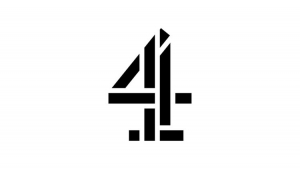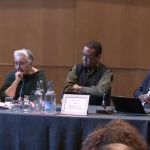The School That Tried To End Racism
This essay, written in 2020, is Howard Sherwood’s response to the Channel 4 documentary, The School That Tried To End Racism, which aired in June 2020. It is clear that the school experiment shown promotes a controversial, minoritarian ideology packaged in the language of an older, classic liberal anti-racism – and the scene where two adult academics, observing children in some distress, comment that it shows the pupils are ‘doing the work’ is shocking. The BAFTA-winning programme captured the zeitgeist of that summer, which was marked by the murder of George Floyd and the Black Lives Matter protests. As our report Who’s in Charge? shows, many councils are adopting similar strategies. We need to make sure the voices of the many who do not support the programme’s pessimistic and misanthropic view are heard!
Last weekend, I watched both episodes of a Channel 4 documentary called The School That Tried To End Racism, which was broadcast recently.
Within the first few minutes, I became uneasy about this experiment which had been conducted with a class of 11-year-old pupils in their first year at a Glenthorne High School, a state secondary school in Sutton, Surrey. The viewer was told that the class of 24 pupils had volunteered to participate. What followed over the following 90+ minutes raised my concerns about this documentary in several respects:
· the programme presents a deeply contested theory as scientific fact;
· the ethics of using children below the age of consent as participants for an experiment; and
· errors through omission.
In view of these concerns, I also questioned Channel 4’s decision to broadcast it.
Theory as fact
Throughout the programme, the academics running the experiment, Dr Nicola Rollick and Professor Rhiannon Turner, presented assertions supported by the narration as incontrovertible facts. The Implicit Associations Test (IAT), developed at Harvard for use in the US, was used as the primary tool for measuring unconscious racial bias. The narration stated that the test “is now widely accepted as an accurate measurement of unconscious racial bias”. This is not so. As an article for the British Psychological Society in 2018 noted, even Mahzarin Banaji and Anthony Greenwald, co-creators of IATs, had their doubts:
“In 2015 Greenwald, Banaji, and their co-author Brian Nosek stated that the psychometric issues associated with various IATs ‘render them problematic to use to classify persons as likely to engage in discrimination’. Indeed, these days IAT evangelist and critic alike mostly agree that the test is too noisy to usefully and accurately gauge people’s likelihood of engaging in discrimination — a finding supported by a series of meta-analyses showing unimpressive correlations between IAT scores and behavioral outcomes (mostly in labs).”
Although a brief visual from US television indicated that the American programme then incorporated into the experiment was controversial, no reference was made to this in the narration or by the academics and it was not discussed.
On numerous occasions, Rollick and Turner made assertions that were presented as facts, such as “we pretend that we don’t see race” and “intervening at this age is crucial if we are to target children’s views before they become crystallised in adulthood”.
This was compounded by a presentational style that was completely inappropriate to a psychological experiment – the academics congratulating themselves through smiles, knowing glances and patronising asides when the responses of the participants were as they had predicted.
At no time during the documentary was there any reference to any other perspective and the absence of any peer review or of any alternative hypotheses was notable.
Ethics
Is it ethical to present identifiable participants in a psychological experiment who cannot legally give their consent? Channel 4’s Working and Filming with under 18’s Guidelines states:
“As a responsible programme-maker and broadcaster, it is crucial that careful consideration and measures are put in place to safeguard the physical and emotional welfare and dignity of contributors under the age of 18, as well as ensuring that their involvement does not cause them to suffer unnecessary distress or anxiety. A child’s resilience and vulnerability can vary significantly depending on factors such as their age, gender, maturity, cultural, ethnic and religious background as well as their previous life experiences.”
Were these guidelines followed and, if so, what specific measures were put in place to protect the children? To this viewer, it was very apparent that the children’s involvement did cause them to suffer unnecessary distress and anxiety.
It appears that the guidelines of The British Psychological Society as set-out in its Code of Human Research Ethics have not been followed in several regards:
· The claim made in the documentary that the IAT is “now widely accepted as an accurate benchmark of unconscious bias” is simply not true. This claim could lead viewers to believe the results it produces are reliable and uncontested.
· One of the children, of black ethnicity, commented at the end of the documentary “Everyone’s been living in a place where white people are more superior. We never knew that until the first test, how that has been embedded in us for 10 years”. This suggests that the test itself plays an active part in the process of changing minds thereby invalidating any results for an experiment claiming to be scientific.
· The experiment was described in the documentary as “controversial”. Were the children, their parents and teachers/head teacher made aware of this and offered an explanation as to why it was considered controversial and what impact it might have on the children? Were the children and their parents given the option to withdraw their child from the project? No information was offered regarding any measures taken to protect these children from the possible effects, both short- and long-term that they might be subject to.
It is interesting to note that when announcing the documentary in January 2020, Channel 4’s working title was The Segregation Experiment, which I suggest better describes what was finally shown.
Inviting children to reflect on the ways in which they may currently be or become racist towards their friends and others is inevitably going to lead to self-doubt and, in this instance, there was clear evidence that it did. One white pupil became tearful on more than one occasion and another of mixed heritage experienced stress, confusion and anger about the way she felt she was being forced to choose between black and white.
This experiment caused the children obvious discomfort and stress. Their personal values and beliefs were exposed and challenged on national television and one, in particular, expressed concern that his personal friendships were under threat by being separated into different groups. I wonder if any risk assessment was done prior to or during the experiment?
Neither was it clear how informed consent was sought and from whom. Although it was stated that the class had volunteered to participate (although it was not clear whether the 24 participants constituted the whole class), no mention was made of who had given consent: was it their parent(s) or was it the head teacher, Steve Hume? It is notable that of the 24 participants shown, 14 were BAME and 10 were White British, which does not correspond to the ratio of “nearly half the school’s intake is BAME” as quoted in the narration.
Numerous media reviews have already been published identifying individual participants and commenting on their appearance, attitude and responses. These children were 11 years old – was any consideration given to the possible effects of this exposure on their well-being and future prospects?
Aside from these specific child protection issues, the programme laid itself open to an accusation of manipulation: it initially depicted a situation where previously there wasn’t an apparent problem and through a series of ‘consciousness raising’ devices created a problem (using the contested IAT test) and then presented a neat solution.
Errors through omission
Here are just two examples:
The failure to disclose the contested value of the IAT test was crucial since the test formed the whole basis of the experiment. This is akin to trying to taking somebody’s temperature with a bicycle pump.
The sequence in Episode 2 in the National Portrait Gallery gave significant dramatic emphasis to the revelation that money was paid to the slave owners rather than the slaves, but failed to explain why reparations were paid to slave-owners. Abolitionists recognised that the only way to emancipate slaves was to pay their owners in order to expedite the release of slaves and prevent further suffering. This crucial fact was not mentioned by either the NPG staff member or the narrator. Slightly later the narrator says, “finding positive examples of those who represent them is proving easier for some than others”. In fact, this only applied to one of the participants (Henry) and the narrator failed to point out that, just as there were very few images depicting black faces, there was a similar dearth of images of poor, working-class white faces.
The decision to broadcast
How was this programme commissioned? Did the programme idea come from Channel 4, which then sought out a suitable case, or was it commissioned as an ‘off-the-shelf’ idea presented to it by the production company or the authors of the study? Whatever the answer is to these questions, the decision to produce and subsequently broadcast the documentary should be questioned. It also highlights Channel 4’s inability to follow its own guidelines (based on those drafted by Ofcom, the channel’s regulator) and seriously undermines the trust that viewers can reasonably expect of a national broadcaster.
Summary
Professor Turner and Dr Rollick made it very clear from the outset that they have a particular agenda. These politicised views and value judgements combined with contemporary interpretations of racism, social justice, identity politics, critical race theory, theories of oppression and current tropes about slavery were, with the assistance of a diversity practitioner from the US, relayed to the children over a three-week period. As noted above, assertions were presented as facts and no attempt was made to present an alternative perspective. It is, therefore, no surprise that at the end of the experiment, the pupils came to the conclusion that they live in a racist society. It felt as though this was what the academics had hoped for all along. This makes me uneasy as their methods could be construed as indoctrination.
In the context of the many flaws and errors outlined above, perhaps the programme makers should have more carefully considered the implications of the unattributed statement in the narration that “if successful, the school’s ambition is to build it into the curriculum”.
Professor Turner stated that the anti-racism project is “something that really needs to be integrated into the whole school system so that issues of race and racism and inequality are discussed the whole way through children’s school career.”
What degree of editorial control did the academic consultants have? It seemed at times as though they were directing the documentary. This blurs the crucial distinction between a documentary programme-maker and their subject. The resulting lack of perspective could lead to the programme being seen as little more than a campaigning polemic.
This programme was so badly flawed that it should never have been broadcast. The experiment’s hypothesis was tested using a problematic methodology that appeared to be engineered to produce a desired result. The failure to provide context and the errors through omission throughout were blatant. It was not so much a psychological experiment as a manifesto for social engineering driven by flawed science. Worse still was the exploitation of children to provide entertainment dressed-up as documentary. The editorial process (particularly the narrator’s script and editing) failed in its primary responsibility to maintain sufficient distance from its subject to provide an objective view. As such, it fell way below the standard expected and deserved by viewers of a programme presented as a documentary.
Howard Sherwood is a graphic designer and photographer.


